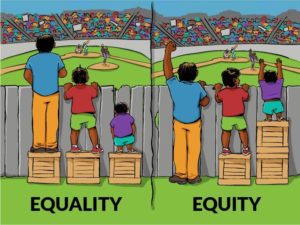by Callie Castro, KCSAE Past President
The February program for KCSAE is on a topic that is front and center in the minds of so many of us these days, not just in associations or corporations, but communities around the globe. I find it disconcerting that many of these conversations continue to be necessary, but also refreshing to know that there is a renewed emphasis placed on the topics of diversity, equity, and inclusion (DEI) and hope that it will withstand the test of time.
In August, I found myself writing about the racial and social unrest in society. At that time, ASAE President & CEO Susan Robertson addressed the ASAE Community and shared the following which still resonates today, “We need tangible commitments from our nation’s leaders to address racial inequalities once and for all, but every one of us needs to do the work, to identify, challenge and change…values, structures and behaviors…” to achieve equity.
I, like many of you probably, have participated in many online sessions this year on the topic of DEI, and I think it is important to understand the difference between these terms. One of the best explanations I have seen is this: diversity – respecting individual differences; inclusion – experiencing a sense of belonging and feeling valued; equality – creating equal access to opportunity; and equity – creating access to opportunity by providing different levels of care dependent on need. This illustration is a great depiction of the difference between equality and equity. Do you see it? Clearly, not everyone needs the same thing to be able to have the same experience.
Picture attributed to: Interaction Institute for Social Change | Artist: Angus Maguire (https://interactioninstitute.org/illustrating-equality-vs-equity/)
Verna Myers, Diversity and Inclusion expert states, “Diversity is being invited to the party; inclusion is being asked to dance.” Increased diversity brings with it more innovation in the long run. It is a win-win situation for individuals as well as organizations and communities. However, you cannot merely focus on diversity. You must make the effort to understand that different people need different things to be successful, thus creating equity and inclusion. You cannot have a one size fits all approach which creates angst with some, asking why one person appears to be getting special treatment. This is where a mindset & behavior shift must occur if true equity is to fully be achieved. It starts with you, but it certainly does not end with you. This mindset has to find its way completely down the chain and permeate through leadership as well as entire teams for everyone to achieve their full potential. We must want to see one another succeed in order for this mindset to become a reality and equity and inclusion to be realized.
I will reiterate this message from my August article: The whole world is calling out for understanding, for unity, for leadership, for dialogue, and for action to improve the quality of life for every human being on this planet. It is incumbent upon all of us to engage in honest and meaningful discussions about how to make our associations, including KCSAE, more inclusive and welcoming. We must support and listen to one another, come together more than ever (albeit virtually), work to be a positive change in the world, and lift each other up.
So, as the description for our upcoming session on DEI states, why should you concern yourself with modeling inclusive behavior? I would say, for one, it is adamant for leaders to understand that every team member comes with a different background and experiences. It is our job to create and maintain an environment that supports every team member, encourages all team members to celebrate one another’s differences, and helps everyone achieve their full potential. I am looking forward to hearing Nicole Smart share her experiences and expertise with us on February 17, and I hope to “see” many of you there as well.
In closing, I find the words of the nation’s first-ever youth poet laureate, Amanda Gorman, still floating around my brain, offering wisdom, grace, and maturity well beyond her age.
“…To compose a country committed to all cultures, colors, characters and conditions of man;
And so we lift our gazes not to what stands between us;
but what stands before us;
We close the divide because we know, to put our future first, we must first put our differences aside;
But one thing is certain:
If we merge mercy with might,
and might with right,
then love becomes our legacy
and change our children's birthright…”
I wish this for my children…a society of love and understanding and fairness for all.

